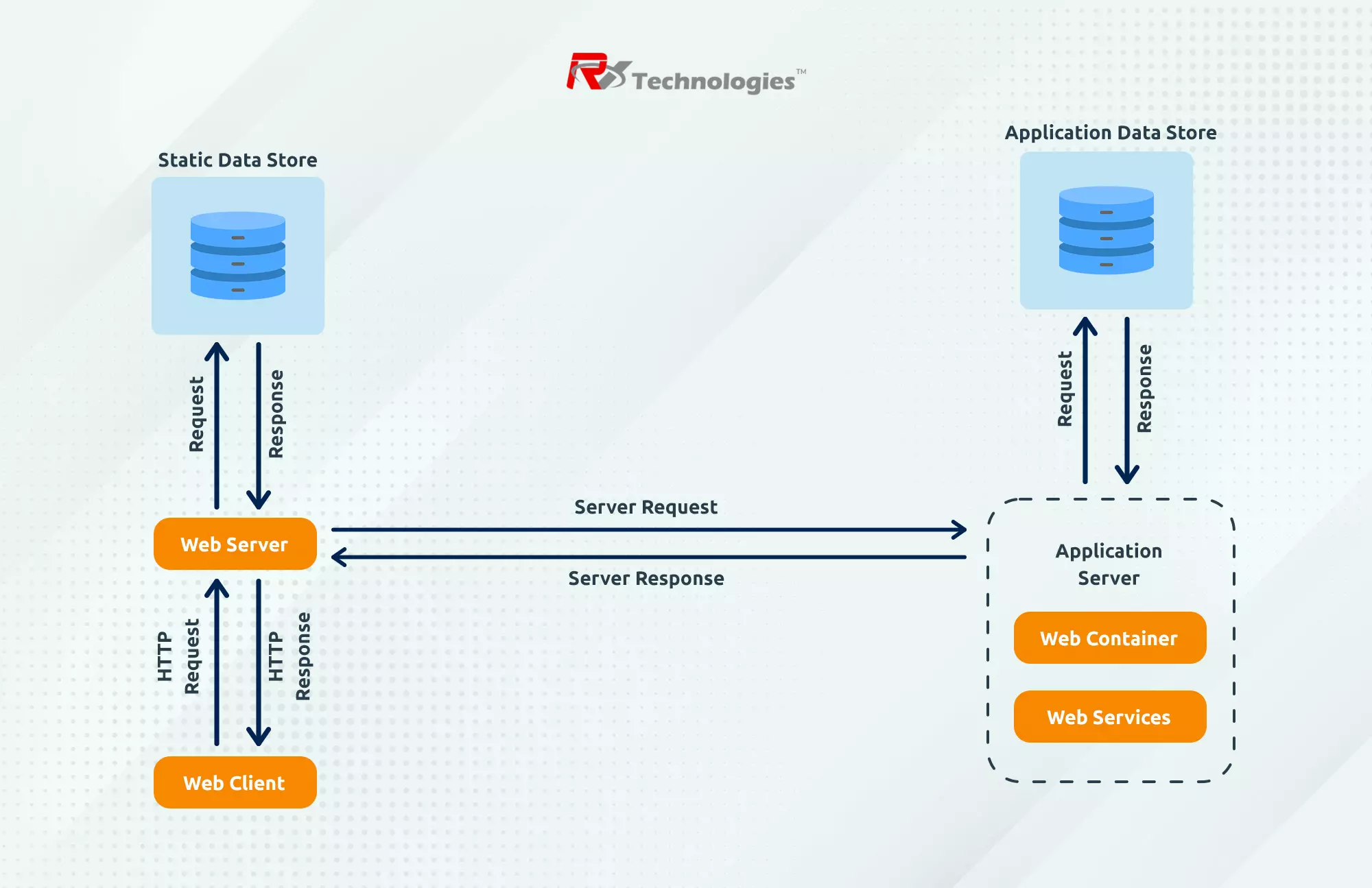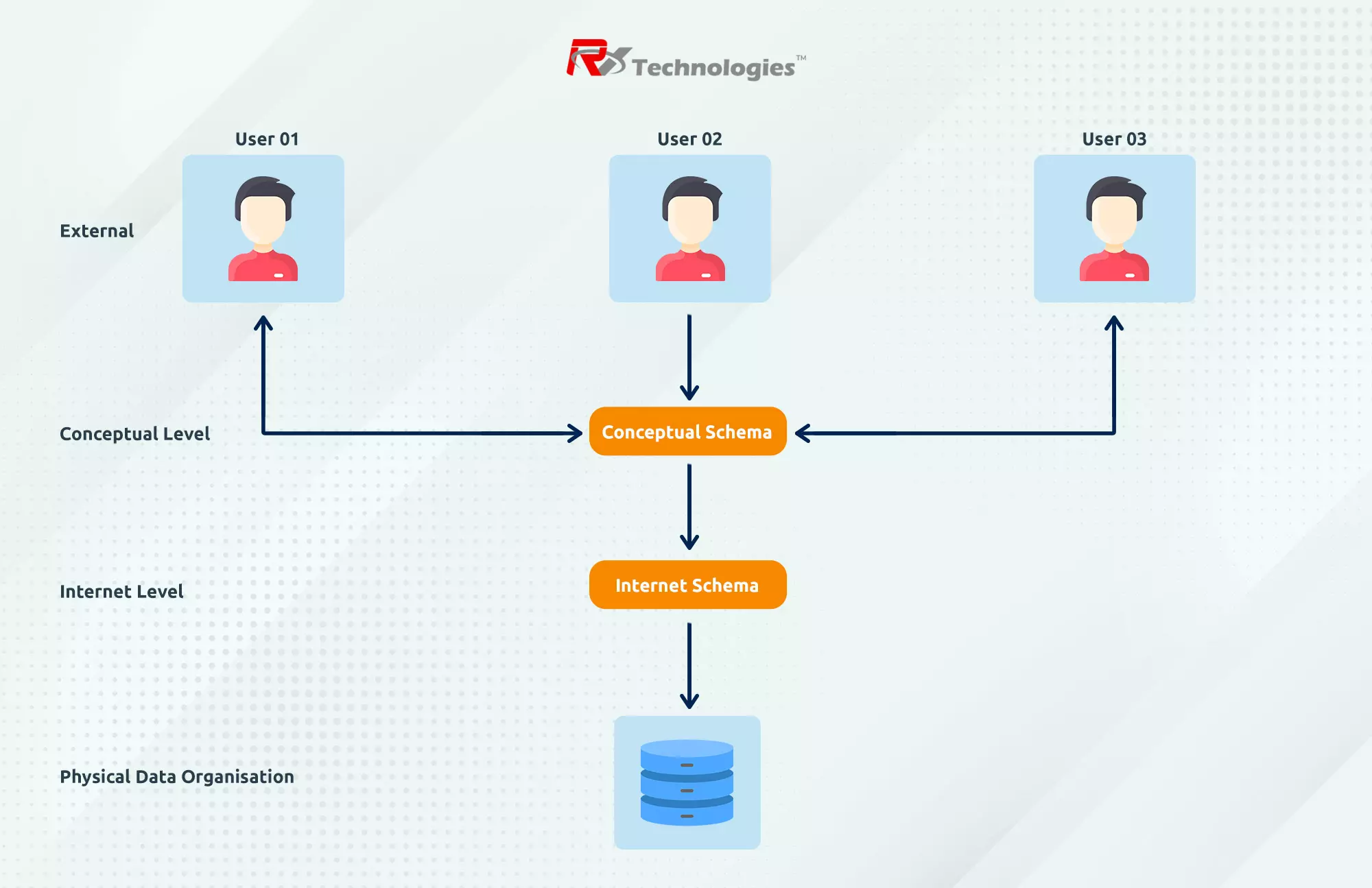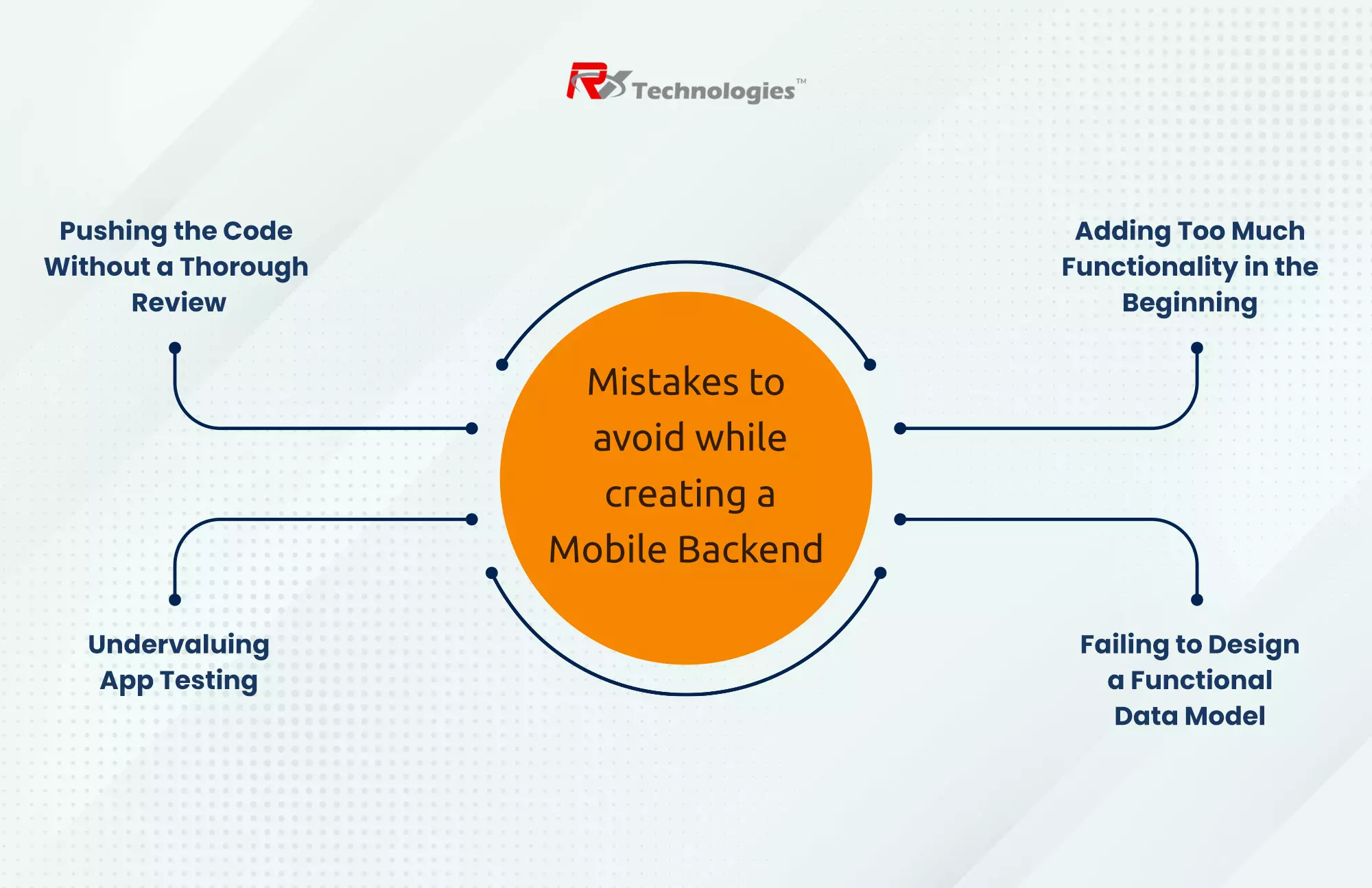Today, mobile applications have become one of the most effective marketing tools for brands to reach their target audience.
By simply launching a smartphone application, companies can garner the attention of millions of users and turn them into long-term valuable clients.
Believe it or not, a simple mobile presence in 2023 (and the coming future) can help businesses unlock new growth opportunities and scale their brands beyond imagination.
However, to achieve these goals, it’s crucial to understand the market and more importantly, launch a distinctive product that sets your company apart from the crowd.
As of 2022, there are nearly 4.41 million mobile apps (iOS & Android combined) available for download on both Google Play Store and Apple’s App Store.
But, if you run a quick poll, only a handful of these apps manage to become the daily go-to solutions for the end-users.
A large number of smartphone apps continue to stay buried deep inside the extensive pool of the App Store.
Now, when it comes to building these mobile apps, several factors can help you achieve success. But, the most crucial factor (among all) is the mobile app backend development.
The mobile app backend acts as the backbone for any mobile application, especially if it requires network connectivity to offer its functionality to the users.
A mobile app backend ensures that the end-users can access the desired features and fetch information from the server without having to deal with any complexities.
In short, the mobile app backend makes the entire app functional and gives users something beyond a pretty interface.
To help you understand more precisely, we are going to unveil the importance of the app backend in mobile app development and how you can build a mobile app backend for apps that ensures remarkable performance.
We’ll also discuss different types of mobile app backend development and how you can choose the right one for your mobile application.
So, without wasting another second, let’s get started.
What is Backend in a Mobile Application?
In simple words, the mobile app backend is the dedicated software that interacts with the server and contains different logic to process user requests.
At its core, the app backend is responsible for managing all the data of an application.
The mobile app backend acts as a standalone application that’s not visible to the users and only relies on machine processing to execute different operations.
Unlike the front end, the mobile app backend doesn’t interact with users whatsoever. That’s why it doesn’t contain any visual elements as well.
Now, the reason why the app backend is an integral part of mobile app development is its ability to store data and process user requests.
Today, when cloud integration has become a crucial part of the software development lifecycle, it makes complete sense to build a powerful mobile app backend that could easily store all app data and secure it from potential threats.
The mobile app backend also fetches information from the server and displays it to the users on their end devices.
Without an app backend, your mobile application will be nothing but a tool that only stores data on the phone’s local storage. In short, it won’t be able to execute any advanced tasks at all.
Let’s take a look at an example to understand the role of the mobile app backend more effectively.
Here’s a working model of Netflix that highlights how Netflix responds to user requests and allows them to stream different movies on their devices.
As you can see in the above snippet, the backend for mobile apps acts as a bridge between the client devices (front end) and the server.
The mobile app backend consists of different APIs and information control systems that process different user requests and extract information from the server accordingly.
Like Netflix, every cloud-based mobile application uses a backend server to execute different tasks.
For instance, food delivery solutions like Uber Eats and DoorDash use the app backend server to store users’, restaurants, and drivers’ information and process different orders.
But, the real question is
Can a mobile application survive without an app backend?
The answer is Yes!
It’s worth understanding that not all apps need an app backend for mobile apps to function.
Being a professional mobile app development company, we have worked on different projects where the backend technology was not a necessity.
The built-in camera on your smartphone doesn’t have an app backend as it doesn’t need to extract any information from the cloud.
Similarly, the Calculator doesn’t also need backend technology because it doesn’t encounter any dynamic changes, and users only use it to perform mathematical calculations.
So, before you start worrying about what type of mobile app backend to choose, make sure to analyze if your application even needs one or not.
Components of a Good Mobile App Backend
At this point, you already have an idea that the backend emphasizes more on the ‘behind-the-scenes elements that aren’t visible to the users.
But, what are these elements and how do they contribute to the overall functionality of the mobile app?
In general, the mobile app backend comprises three major elements.
- Web Servers
- Database
- Middleware
In general, the mobile app backend relies on APIs to establish connectivity between these three elements.
Let’s dive deeper into these components to understand how they function to support the overall performance of the app backend.
Web Servers
Web Servers are dedicated machines (high-power computers) that are used to store information and respond to customer requests.
In terms of mobile app backend development, web servers are ideally high-performance supercomputers that can store large volumes of data and simultaneously process thousands of user requests without experiencing downtime.
Ideally, web servers can be divided into two different categories:
- Physical Servers
- Cloud-Based Servers
Choosing the right server for your mobile app backend will mainly depend on your individual requirements.
For instance, if you want to launch a small-scale mobile solution first, a shared cloud server will be enough to accommodate all the incoming traffic.
But, if you want to expand your business and launch a global mobile solution, it would be better to install dedicated physical servers due to their better performance, high security, and zero downtime.
Developers use different web server platforms to set up a dedicated server for their mobile applications. Some of these platforms include:
1. Apache
Apache, also referred to as Apache HTTPS server, is an open-source server platform that is used by nearly 67% of all websites on the Internet.
In terms of mobile applications, nearly 35% of mobile platforms use Apache as the backend server.
Being open-source, Apache provides developers with the liberty to customize their server according to the app’s requirements.
As compared to other available options, Apache is relatively fast and secure, and it also offers better scalability.
In addition to small-scale traditional mobile apps, Apache can also support enterprise-level mobile apps with multi-level backend architecture and extensive functionality.
2. NGINX
NGINX is another feature-packed web backend software that offers cloud server support for both mobile and web applications.
Being a full-scale backend server solution, NGINX is an ideal solution for different backend-related tasks including caching, file proxying, and live streaming.
NGINX provides different packages, which means app publishers can choose a custom plan that caters to their app requirements.
Types of Databases
The database is nothing but a collection of data that your mobile app needs to provide users with different functionalities.
The database stores different iterations of the data in the form of relations, more commonly known as tables.
Storing data in a dedicated database instead of the server enhances the overall performance of the latter by a huge margin.
More importantly, in case of server crashes, you can still retrieve all the crucial data from the database.
It’s worth understanding that the database is an integral part of the backend for mobile apps.
Why?
Because it’s responsible for accepting user queries and accepting results from the server to display on the user’s screen.
Like web server technologies, there are many database tools that developers use throughout the software development process.
These technologies include:
1. MySQL
MySQL is the conventional relational database management system that stores data in a structured format.
It’s an open-source database management solution, which means database managers can easily build, scale, and customize the data and avoid unexpected data redundancy.
2. MongoDB
MongoDB is a modern-day database solution that’s designed around the idea of “NoSQL”.
It doesn’t follow a relational structure and the data is stored in JSON-like documents with optional schemas.
Due to its non-relational structure,
MongoDB offers better scalability, allowing database managers to build a scalable database that establishes a secure path between the client and the server.
Middleware
As the name implies, middleware is a piece of software that sits between the front end and the back end.
In general, the middleware follows a multi-layer architecture that ensures the user requests could be processed at different levels.
Middleware is also the place where different APIs execute their operations and connect with the server to process different requests.
Mistakes to avoid while creating a Mobile Backend
With different components and a critical architecture, building the app backend is not a straightforward process.
Unlike designing the user interface (front-end), developers have to devise different logic to integrate the desired functionality into the backend.
And, due to their higher complexity, mobile app backend developers usually encounter an array of roadblocks while designing a backend.
While these mistakes/roadblocks are inevitable in the majority of cases, mobile app backend developers can follow a few practices to avoid them or at least mitigate their consequences.
Let’s take a look at some of the most common mobile app backend development mistakes and what practices you can follow to avoid them.
1. Pushing the Code Without a Thorough Review
Here’s the deal; developing the mobile app backend is a nerve-wracking process, especially when we are talking about a feature-packed, multi-functional app such as Netflix or Amazon Kindle.
Such apps require thousands of lines of code to deliver the required functionality.
It means unexpected blunders in the code are inevitable, which makes it extremely crucial to review the code thoroughly before pushing it to the server.
Apart from going through the entire code themselves, backend developers should also consult with other team members (including front-end experts) and ask them to review the code.
This will ensure that your code doesn’t have any bugs, which will reduce your testing efforts in the long run and help you accelerate the overall time to market.
2. Adding Too Much Functionality in the Beginning
We understand that you want your mobile app to be packed with features so that it can engage the customers right away.
But, you might be surprised to learn that adding too much functionality at the beginning of the software development lifecycle can become counterproductive as well.
When you start adding too many features, it becomes challenging to validate the performance of each module.
Things get more complicated when there are deadlines that need to be met because, in this situation, the majority of development teams are less likely to prioritize proper testing of the application.
This could result in unexpected app failures, which may trigger poor user retention.
To avoid such instances, it’s always a good strategy to start with the basic functionality and then gradually move your way up the ladder.
This will give you enough time to test each module individually and validate its functionality as well.
3. Undervaluing App Testing
As one of the leading mobile app development companies, we believe that software testing is the most crucial phase of the development process.
Launching a mobile application without testing it properly will most likely backfire and restrict you from acquiring new customers.
When it comes to testing, the majority of development teams follow a wide range of testing methodologies such as unit testing, functional testing, and non-functional testing.
Regardless of the testing approach your team follows, it’s crucial to test each module individually.
This will ensure that your app works under all circumstances and doesn’t encounter unexpected failures.
4. Failing to Design a Functional Data Model
The data model of a mobile application decides the entire data flow through different modules.
If you want your application to deliver remarkable performance, it would be imperative to design a well-optimized data model that ensures an uninterrupted data flow.
Now, while planning the data model, many developers tend to make decisions without doing proper research.
While this approach can yield the desired results in some cases, it’s most likely to trigger different issues such as invalid production data or slow data processing.
That’s why it’s always advised to design the data model by collaborating with the entire team. This will allow you to design a data model that facilitates your app’s workflow.
Here’s a quick approach to designing a functional data model for your mobile app.
- Sit with the entire development team and decide the overall workflow of your application
- Plan the queries that different modules would execute
- Start designing the relations for your data model
- Make sure to choose the appropriate data types for all your data fields
Preferred Tech stack of Mobile Backend Development
If you’ve come this far, chances are you are serious about launching a successful mobile app for your business.
So, after understanding the common mobile backend app development mistakes, the next step would be to familiarize yourself with the tech stack used by developers to build dynamic backends for mobile apps.
Now, these aren’t the only backend technologies out there and each mobile app development team has a preferred tech stack for app backend development.
These are the technologies that we commonly use to construct robust backend solutions for different types of mobile applications.
1. Python
Python is one of the most popular backend technology as nearly 30% of backend developers use it for mobile app development.
Python’s ease of use and better transparency are two of the major reasons why Python has evolved as the most preferred backend development technology.
If you have ever written code in Python, you may already know that its syntax is quite similar to regular English.
It means the learning curve is pretty low and developers can easily acquire the required Python skills to build different mobile apps.
Another reason behind Python’s popularity is its versatility. Being a multi-purpose programming language, developers can use Python to build backends for mobile apps as well as websites.
A few Applications Built Using Python:
- Dropbox
- Spotify
- Uber
2. Laravel
Laravel is a PHP-based web framework that’s primarily used for web development. However, due to its versatility, developers can also write PHP-based backend solutions for their mobile apps in Laravel.
With Laravel, developers can build both small-scale mobile apps with limited features and large-scale enterprise apps with multiple modules.
And, since the syntax is pretty much similar to conventional PHP scripts, Laravel accelerates the overall development process and ensures faster time-to-market.
A few Applications Built Using Laravel:
- Tumblr
- MailChimp
- Flickr
- Wikipedia
- Digg
3. Amazon AWS
Though not particularly a mobile app backend technology, Amazon AWS is a cloud-based service that acts as a virtual server for your mobile apps.
You can use Amazon AWS to host your mobile app and set up hassle-free communication between the front end and back end.
Today, a wide range of mobile apps have already migrated to Amazon AWS due to its extensive list of features.
Amazon AWS provides a plethora of APIs that developers can integrate into their mobile apps to activate the desired functionality.
Also, Read | Common API Development Risks and How to Migrate them
Amazon AWS is an ideal mobile app backend solution for large-scale applications that require multiple API integrations.
A few Applications that Use Amazon AWS:
- Netflix
- Twitch
- BBC
- Turner Broadcasting
4. Node.js
Node.js is a reliable backend app development technology for highly complex mobile apps.
Node.js follows a single-threaded architecture, which makes it an ideal choice to develop scalable mobile applications for different industries.
With Node.js, developers can easily construct multi-functional custom APIs and integrate them into the source code to deliver better functionality.
Basically, if you want to design an event-driven backend server for a mobile application, Node.js will be the most suitable option.
A few Applications Built Using Node.js:
- Paypal
- eBay
- GoDaddy
- Groupon
5. ASP.net MVC
ASP.net MVC is a web development framework that developers mainly use to build web apps and conventional websites.
However, you can also use the framework to construct robust backend solutions for cross-platform mobile applications.
Know about | Top 15 Mobile App Development Frameworks for 2023
Being an open-source community-based framework, you always have the assistance of global developers who’ll help you tackle unexpected issues with your project.
Not to mention, the open-source nature doesn’t require unnecessary license fees that’ll automatically bring down the app development cost by a huge margin.
Some developers also use ASP.net with Microsoft’s Xamarin – an open-source mobile app platform that allows developers to use ASP.net for native app development.
With Xamarin, your mobile app development team Xamarin.iOS, and Xamarin. Android cross-platform implementations to build native solutions for both platforms.
A few Applications Built Using ASP.net/Xamarin
- Alaska Airlines
- Storyo: Storytelling Video Maker App
- FreshDirect: Online Food & Grocery
- MRW Courier Mobile App
- APX: Environmental Asset Tracker App
Conclusion
The app backend is an integral part of mobile app development, especially if you want to launch a network-driven mobile app that requires Internet connectivity to deliver its functionalities.
While building the backend for mobile apps, choosing the right tech stack is the most crucial decision as it’ll decide how your mobile app performs among the end-users.
To make the right decision, we recommend consulting a team of professional mobile app developers who have worked on different types of mobile applications.
If you have any queries regarding the backend for mobile app development, contact our development team and we’ll provide you with a custom solution accordingly.





 Updated: March 25, 2022
Updated: March 25, 2022 
















